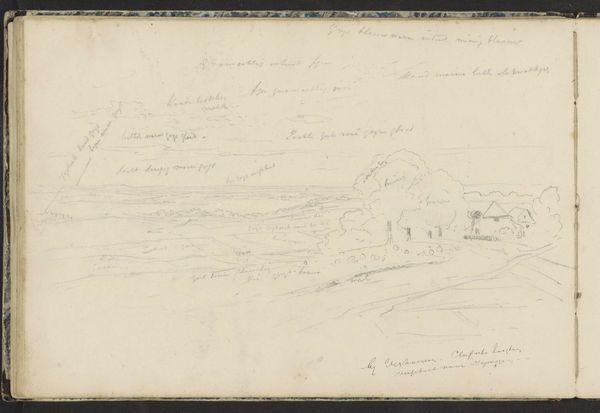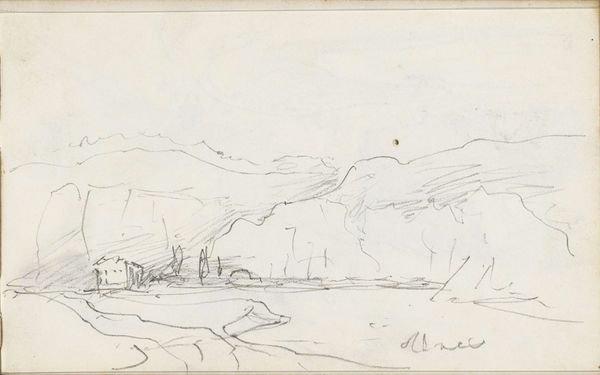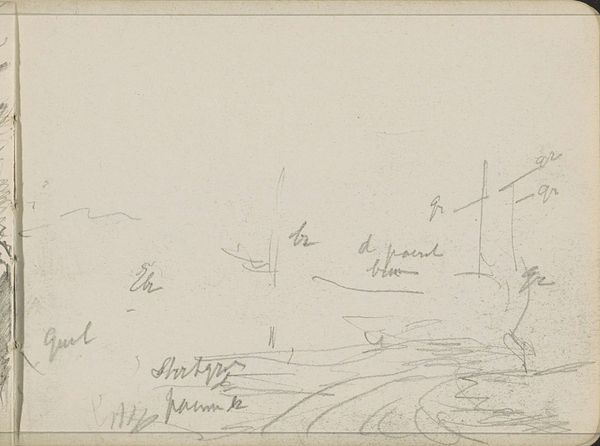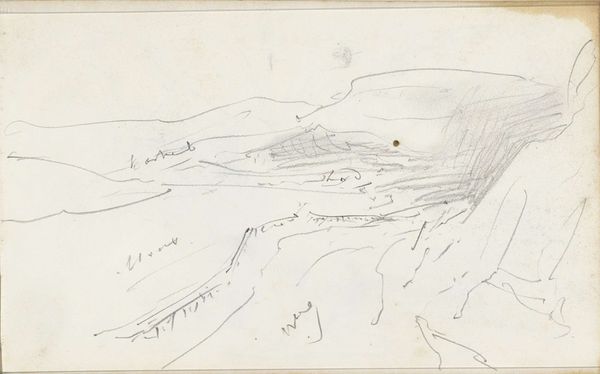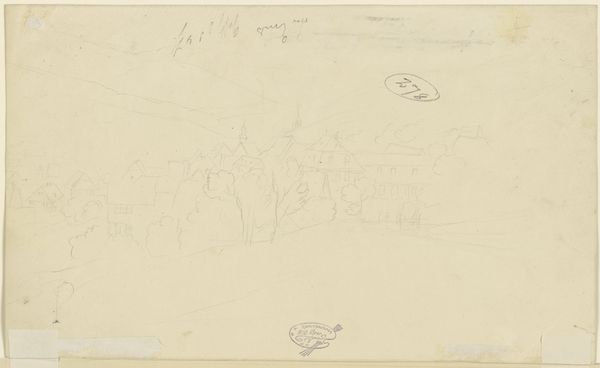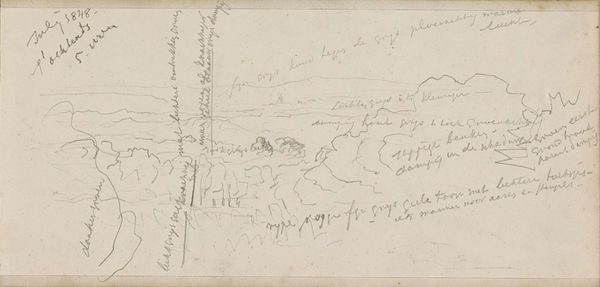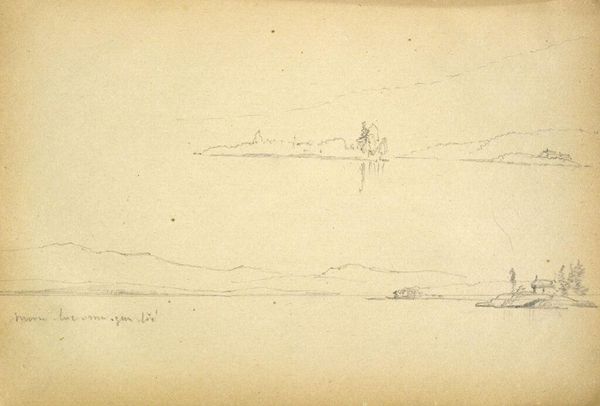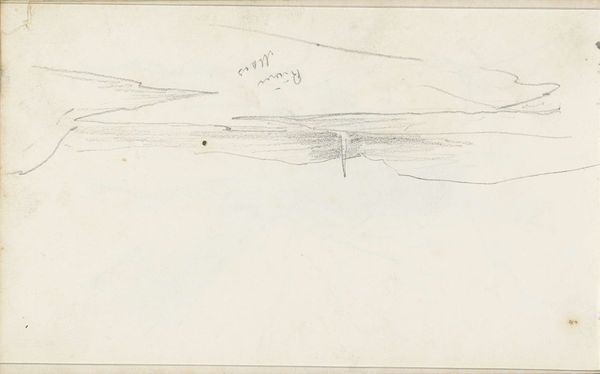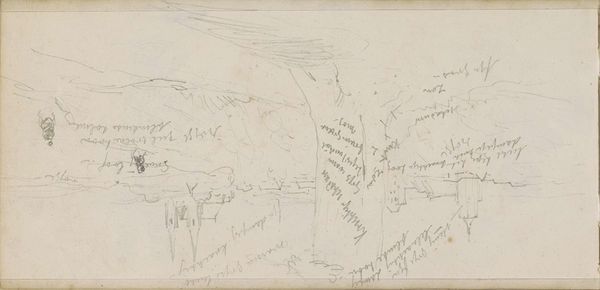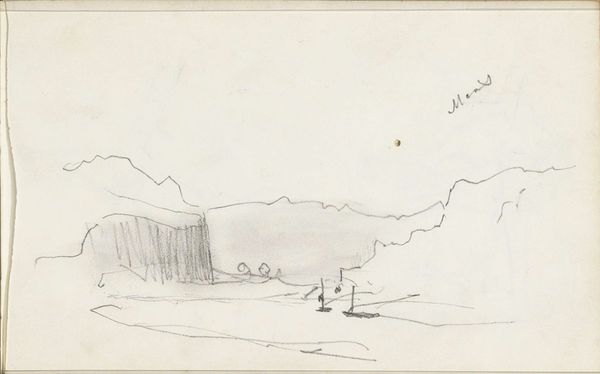
drawing, pencil
#
drawing
#
landscape
#
romanticism
#
pencil
Copyright: Rijks Museum: Open Domain
Curator: Welcome. Before us hangs "Namen aan de Maas" by Johannes Tavenraat, sketched around 1840 or '41. Tavenraat used pencil to capture this vista; the artwork is proudly displayed here at the Rijksmuseum. Editor: There's an evocative sparseness to this drawing; it captures an undeniable stillness, wouldn’t you agree? The composition, despite its apparent simplicity, invites quiet contemplation, making astute use of the near monochrome. Curator: Indeed, but it's more than just formal skill on display. Look closer. This work isn't merely a visual exercise but rather encapsulates a particular cultural moment where Dutch Romanticism intertwined with socio-economic realities related to labor near the Maas River. The muted tonality mirrors the often-harsh realities of 19th-century working life for the common citizen of that era. Editor: Interesting interpretation! But consider how the minimal use of line, creates depth with the lightest of touches. The interplay of light and shadow – subtle as it is – defines form and spatial relations which I would see more as artistic style that comment on cultural moments. Curator: It's also vital to consider how this 'simplicity' arose not from pure aesthetics, but as result from economic constraints and industrial advances that popularized readily accessible art supplies such as mass produced paper and affordable pencils which were new and fashionable art materials for everyday workers to begin capturing landscapes, previously only something for wealthier artists with access to paints. The material shapes the message, I suggest. Editor: But isn't it precisely that tension— between the material means and aesthetic ends—what makes such sketches fascinating, artistically? Regardless of industrial impact, we can agree how striking the piece really is, how the open composition, with that wide sky and river and its use of shadow and space really makes this art more that the materials it used? Curator: I think you prove my point by illustrating just how economic changes in industry had the power to enable wider, grander artworks that romanticize landscapes by new artists; the art materials were no longer limiting and influenced the art in itself. Editor: Well, whether function led to form, or form used function to be successful, I’m thankful to Tavenraat for leaving behind an insightful glimpse into both aesthetic intention and broader historical processes for future reflection.
Comments
No comments
Be the first to comment and join the conversation on the ultimate creative platform.

